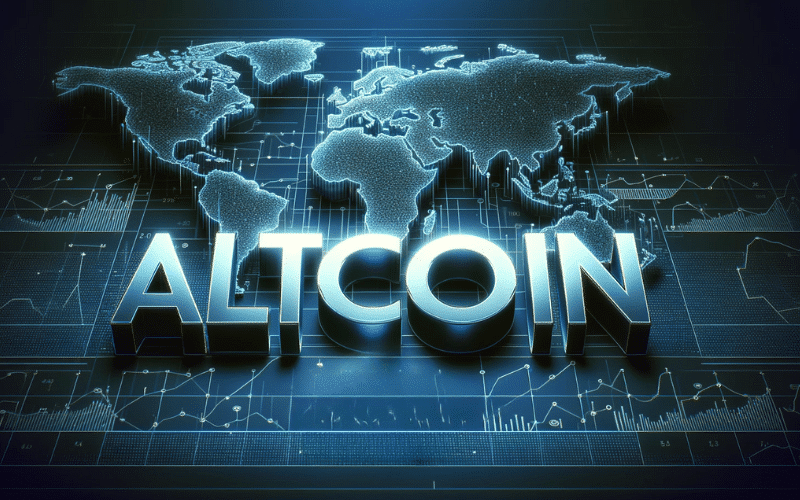While Bitcoin is still holding the title of “biggest cryptocurrency”, the digital currency landscape is far richer and more diverse than Bitcoin alone. Over the last decade, a plethora of new cryptocurrencies came into the light with unique attributes. These cryptocurrencies are known as “Altcoins”.
These Altcoins are not just mere replicas of Bitcoin; they represent a vast spectrum of technological advancements, each with its unique attributes and potential applications.
What are Altcoins?
Altcoins, short for “alternative coins,” are cryptocurrencies that emerged post-Bitcoin. While they share the core concept of decentralized finance and the utilization of blockchain technology same as Bitcoin, Altcoins diverge in various ways, be it in their underlying algorithms, distribution methods, or usage.
Surprisingly, the first Altcoin, called Namecoin (NMC), was invented in April 2011, three years after Bitcoin’s launch. In the same year, another popular altcoin, Litecoin, came to light.
Here are two primary purposes for which creators design Altcoins:
- Improving on Bitcoin: Many altcoins aim to address perceived limitations of Bitcoin, such as transaction speeds, scalability, energy efficiency, or providing more privacy-focused features.
- Specialized Uses: Some altcoins are created for specific use cases, like facilitating smart contracts, decentralized finance (DeFi), social media platforms, and more. Ethereum, for instance, introduced the concept of a programmable blockchain that can execute smart contracts.
Note that, It’s important to distinguish between altcoins and tokens. Altcoins have their separate blockchain (like Ethereum, Litecoin, etc.), while tokens are built on top of another blockchain, like ERC-20 tokens on Ethereum.
Also Read: The Evolution of Ethereum: Pioneering the Next Wave of Crypto Progress
Mechanism: How Altcoins Work?
The operational backbone of Altcoins is predominantly the blockchain, a decentralized ledger that meticulously records transactions. However, Altcoins are not a monolith; they adopt various mechanisms to validate transactions and secure their networks.
For instance, Ethereum is transitioning to a Proof of Stake (PoS) model, which is considered more energy-efficient compared to Bitcoin’s Proof of Work (PoW) system. These technical nuances influence factors like transaction speed, scalability, and environmental impact.
To verify transactions, altcoins use consensus mechanisms. The most common are Proof of Work (PoW) and Proof of Stake (PoS). PoW involves solving complex mathematical problems to validate transactions and create new blocks (as seen in Bitcoin). PoS, on the other hand, allows coin holders to stake their coins to validate transactions, requiring less energy than PoW.
A vital component in the ecosystem of Altcoins is the cold wallet, a physical device that securely stores cryptocurrency private keys offline, protecting them from online hacking risks.
Whether it’s a hardware-based solution or a software application, these wallets ensure the security of the user’s digital assets through encryption and key management.
Major Altcoins in the Market
In the bustling market of Altcoins, several have risen to prominence. Beyond Ethereum and Litecoin, there’s Ripple (XRP), which aims to revolutionize international money transfers, and Cardano, with its research-driven approach and emphasis on sustainability. Polkadot stands out with its interoperability features, enabling different blockchains to connect and exchange information.
Binance Coin (BNB) has evolved from a utility token for discounted trading fees on the Binance exchange to a broader utility token in various ecosystems. Similarly, Chainlink, a decentralized oracle network, aims to bridge the gap between smart contracts and real-world data.
Conclusion:
Altcoins are more than just adjuncts to Bitcoin; they represent a broad spectrum of opportunities and innovations in the cryptocurrency domain. As they continue to evolve and mature, Altcoins are poised to play a significant role in shaping the future of digital finance and blockchain technology.
Despite their potential, Altcoins face challenges, including regulatory scrutiny, market volatility, and technological hurdles. Moreover, with thousands of Altcoins available, the market can be overwhelming for investors and users.
The future of Altcoins is bright and promising. Their continuous evolution and the innovative solutions they offer in finance, governance, and beyond point to a dynamic and transformative landscape in the world of cryptocurrency.
Nevertheless, it is advisable to do independent research if one is planning to invest their hard-earned money into altcoins. While most experts consider crypto to be a high-risk, high-reward game, people should never unsee its highly volatile nature.






